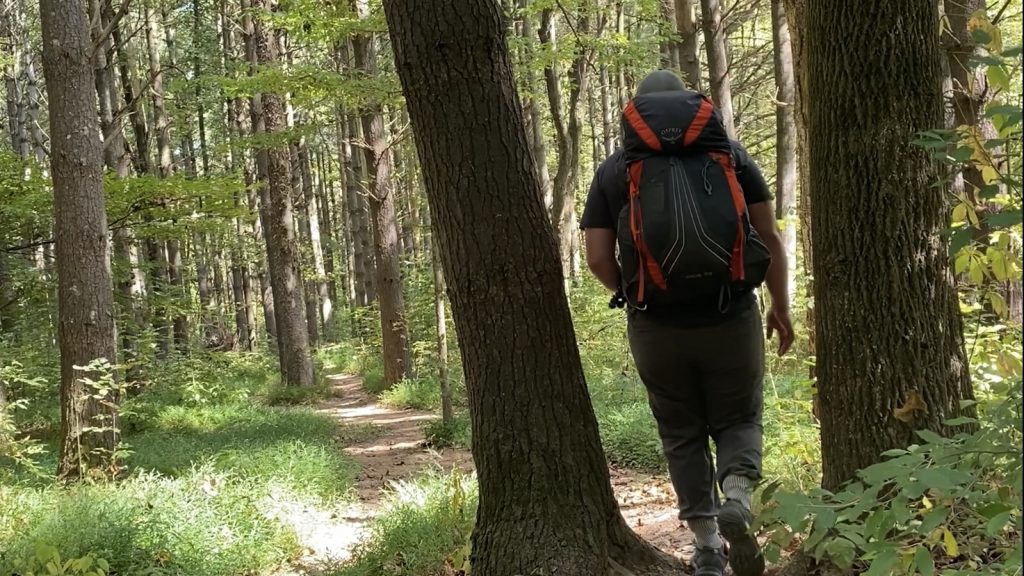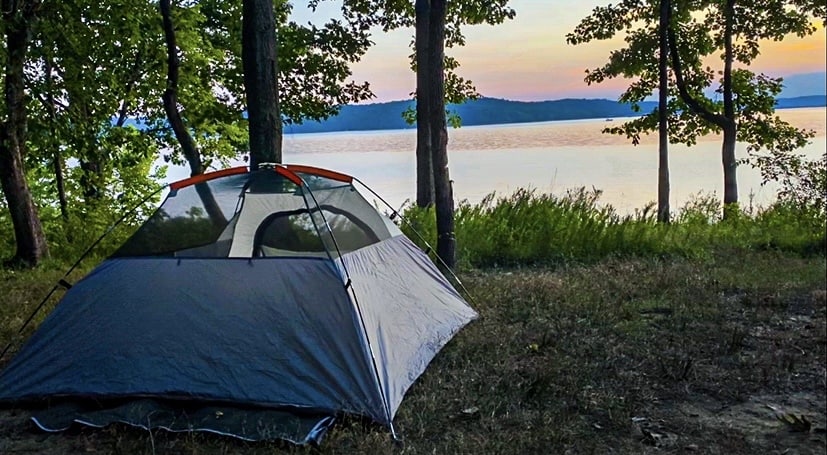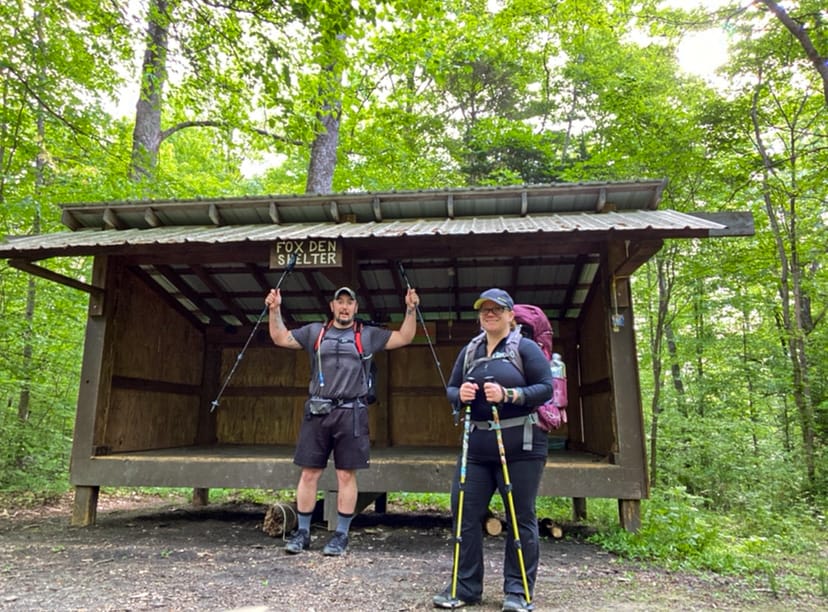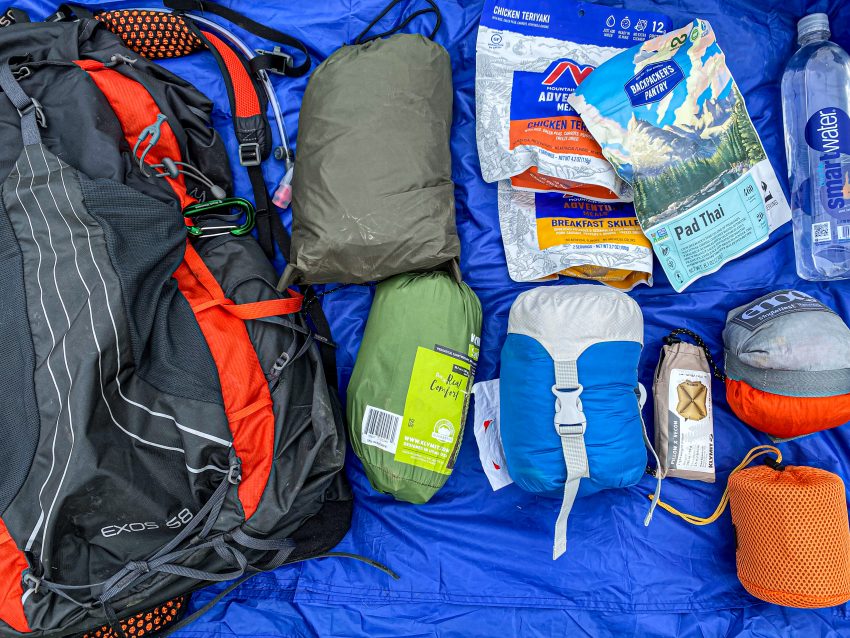So you’re ready to get into backpacking, but don’t know where to start? Whether you’re going on a one-day trip or a multi-day trip, there is essential gear that you do not want to forget or look over. Here are the top essentials that we take on every trip and you should, too.
Backpack:

Choosing a backpack does not have to be complicated. It’s as easy as going to an outdoor store and getting fitted for the right size. This can play a huge role in how comfortable you will be on the trail. The biggest mistake new backpackers make is buying a pack based on price and not on how it fits. This can lead to a terrible experience and cause back and knee pain. Not to mention the exhaustion you will feel from being so uncomfortable. Try finding a pack at around the 40-70 liter range.
I personally use an Osprey Exos 58. This pack is light , at just over 2lbs, and has suited me from one day to multi-day trips with no issues. A good tip is to buy the gear you can afford first and your backpack last. This way you can find the right size pack that will fit all your gear.
Shelter:

Shelter is one of the big three that is essential and should never be overlooked. Whether you’re a tent person or a hammock person, you need to figure out which one best suits you. While tents tend to be lighter in weight, I personally sleep better in a hammock.’
Hammock camping tends to be a little heavier in weight due to having to carry a tarp/rainfly, hammock, straps, and sometimes a bug net. To me, the extra weight is worth it if it helps me sleep better and be energized the next day. No matter what you decide to go with never go without your shelter.
Read More on the best tents for backpacking:
Sleeping Bag:
Your sleeping bag is one of the top essential items to consider. You will need to buy a sleeping bag that will be compact enough to fit in your backpack yet still fit your budget. Synthetic bags are going to be cheaper than a down sleeping bag. While down bags are lighter and more compact, if it gets wet, it will take a lot longer to dry than a synthetic bag.
While shopping for bags, a good rule of thumb is to subtract 10 to 15 degrees from the weather you plan on backpacking in. For Example: If you plan on backpacking where the low temperature is 30 degrees, you’ll want to have a bag suitable for a 15-20 degree rating. I am a 3-season backpacker and carry a 20 degree Kelty Tuck. This bag has treated me well, and I have had no issues with it over the years.
Water:
Water is the most important resource. As soon as you run out of water, you run the risk of getting dehydrated. When you are miles and miles from your ending point, this could spell trouble. Men need 3.7 liters of water per day and Women need 2.7 liters a day. Use those measurements as starting points to plan for your hike.
Typically it’s a smart idea to carry more water than you need-just in case. Personally, I’ll carry a 2-liter bladder and/or a liter bottle of water. For more information on staying hydrated, read more here.
Always do research on reliable water sources during your trip. Always boil and or use a filter. I have carried a Sawyer mini and also a Sawyer squeeze and would highly recommend either one. Both can be found at any outdoor store or even at Walmart and Amazon.
Cooking:
There are so many options out there for cooking items. If your budget allows you can get into the titanium game by purchasing titanium pots and silverware or just purchasing a Stanley Cup from Walmart and bringing a fork from the kitchen has kept me happy over the years.
As far as a cooking system is concerned, you can simply pick up a jet boil system that has everything included. I personally jumped on Amazon and purchased a $10 portable stove that will attached to a small fuel can.
If you think you don’t need a portable stove and fuel and that you’ll just use the campfire, ask yourself: What if it rains or you cant get a fire started? Then what? Bringing a cooking system is always worth it.
Food:
When you think of hiking and backpacking, eating anything but trail mix and granola bars is all that comes to mind. There are some great freeze-dried meals on the market today – Mountain House to Backpackers Pantry. Or simply go to the local grocery and pick up ramen roodles, instant potatoes and my favorite are the rice sides.
I always over-pack food just in case I get hurt, or stuck, or if the trail just takes me longer to hike than I anticipated. Always be prepared.
Fire:
I always enjoy a nice fire when I get to camp. Its what makes camping for me. Depending on how many days i’ll be out, i’ll always bring some type of fire starter. A simple lighter and a package of Wet Fires are my favorites.
Read more on the Best Fire Starters for Backpacking Here:
Weather-appropriate clothing
Weather conditions are going to affect the different types of clothing you will need to wear. Clothing that is more versatile would be a moisture wicking fabric such as polyester. Merino Wool is another great option for colder nights while climbing into your sleeping bag. When it’s colder, wear more layers and shed those layers as you warm up to avoid sweating and chills. For the warmer months wear light breathable layers to keep you cool. Weather can be so unpredictable so always pack a rain jacket or poncho.
Stuff Sacks:
To me, stuff sacks are essential. Stuff sacks can pack down easily, and they weigh just ounces. They can also keep items dry as long as they do not get submerged in water. I pack extra clothes and even some camera gear in separate stuff sacks. I’ll also keep my food in stuff sacks if I am not in bear country. If in bear country you, will need to look into a bear vault to carry and store food.
Footwear
No matter whether you prefer boots or trail runners, having the correct shoes is super important. Having a solid shoe that is designed for the type of terrain you are hiking is critical. You don’t want to be 5 miles into the wilderness with basketball shoes while your feet are killing you with bruises or blisters and chance getting stuck out there.
Taking care of your feet is more than just your shoes. Consider your type of socks as well. Having hiking socks will also help contribute to preventing blisters and sweaty feet.
Read More on How to Treat and Prevent Blisters While Hiking.
Sock brands to check out would be Darn Tough, Smartwool, and Wigwam.
You can read more on the best hiking socks here.
Navigation
Having proper navigation and being able to read those navigation tools such as a map or compass can get you out of a sticky situation quickly. Technology these days has allowed for GPS apps on your phones such as the All-Trails app that allow you to navigate with no cell service. However, what if your phone battery dies or you fall and break your phone? Having and knowing how to use a paper map and compass is always a good idea and should always be carried.
First Aid Kit
Always be prepared for any situation. Insect bites, a broken arm or leg, and even getting lost. Having a proper first-aid kit will go a long way. First aid kits should, at minimum, include bandages, ointments/creams, pain relievers, and tweezers. A knife or multi-tool with a knife in it is a great item to have in any emergency kit. A knife can help with preparing limbs for a fire or shelter and also defending yourself.
Headlamp
A headlamp is an essential piece of gear that you only need to forget once to realize how valuable a headlamp can be. Buying a headlamp with at least 200 lumens is recommended. Always have fresh batteries or a fully charged headlamp before venturing off. That hike may take longer than you expect and a hike back in the dark can be disastrous, so having a reliable headlamp would be a necessity.

At the end of the day, each trip will depict the types of gear for that trip. Over time you will upgrade to light and better quality gear. With that being said, you should never backpack without the essentials. Leave No Trace. Happy Hiking!
